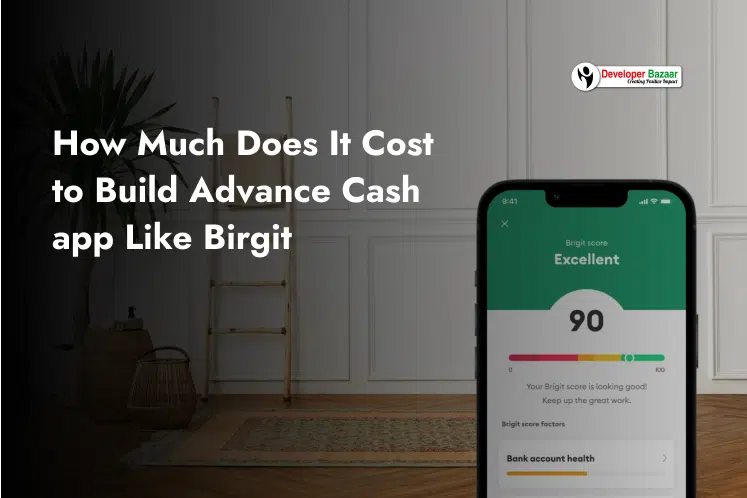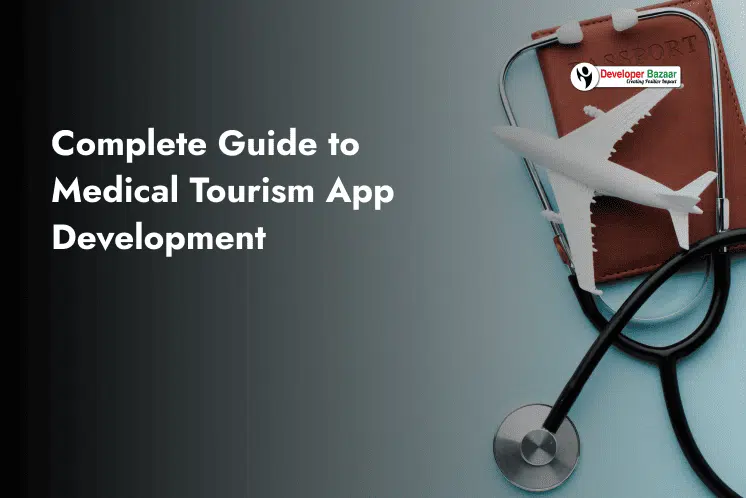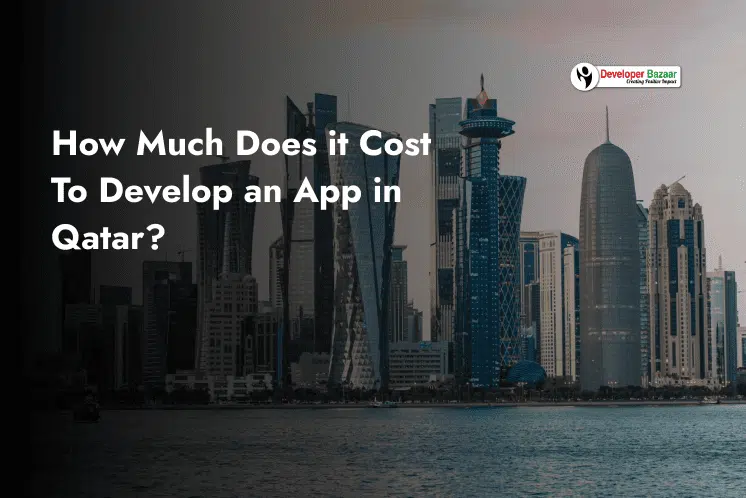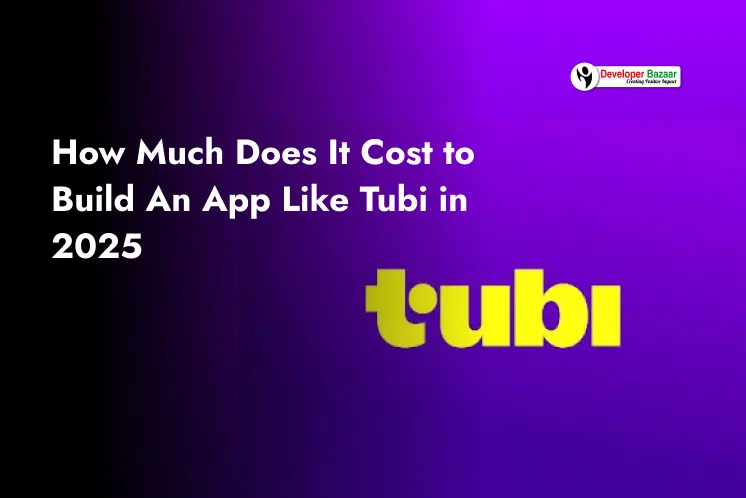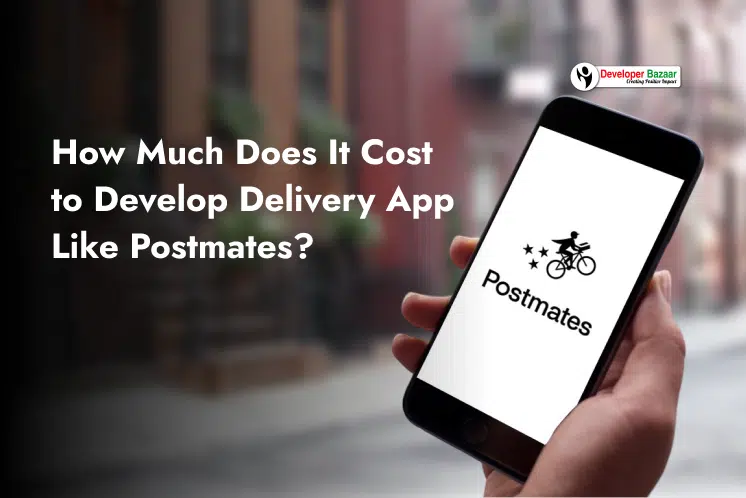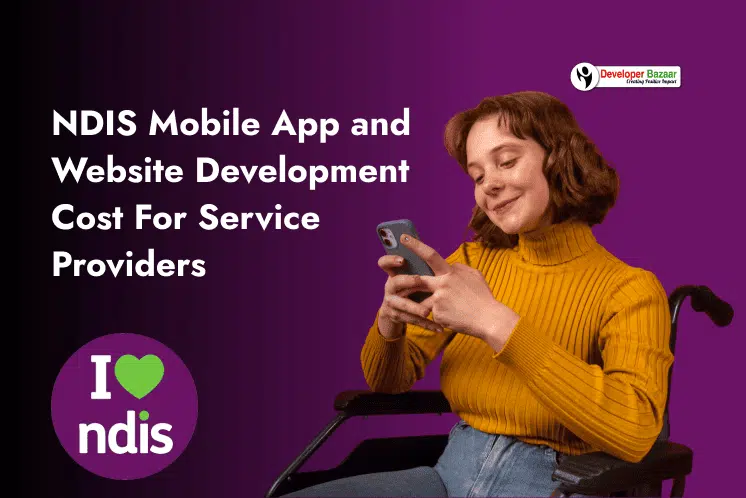Table of Contents
ToggleIn today’s competitive market, the travel industry is on rise. The ability to track flights in real time is more important than ever. Whether it’s for travelers, airline operators, or logistics companies, flight tracking apps provide instant visibility into aircraft movements, delays, and arrival times.
Flight Tracker App Development is becoming a must have solution for businesses looking to enter into this growing demand. From improving travel experiences to streamlining operations, these apps offer real value.
In this article, we’ll explore how to develop an app like Flightradar24, what made them a global success, and why now is the perfect time to invest in developing a flight tracker application.
Overview of Flight Tracker App Development
Flight Tracker App Development involves creating a digital platform usually mobile and web-based that provides real-time information about aircraft around the world. These apps connect with data sources like ADS-B receivers, satellites, and aviation databases to show live flight routes, departure and arrival times, delays, and more.
Businesses are increasingly choosing to create an app like Flightradar24 because it serves multiple user segments: frequent flyers, aviation enthusiasts, logistics firms, and even airport management teams.
Whether you want to build a full-featured commercial app or a niche -based app for a specific audience, understanding the technology and user needs is key to success in this space.
Why Flightradar24 Became a Global Success?
Flightradar24 didn’t get success overnight but it solved a clear problem in a smart and scalable manner.
What made it the top name in flight tracking app market:
1. Real Market Demand
Flightradar24 quickly found a user base that needed real-time flight data, airlines, airports, travelers, and aviation fans. It made live tracking easy and accessible to the masses.
2. Powerful Data Integration
To develop an app like Flightradar, you need reliable tracking infrastructure. Flightradar24 uses a combination of ADS-B receiver networks, satellite data, and MLAT systems, along with FAA and Eurocontrol data, to ensure accuracy across regions.
3. Smart Monetization Strategy
Flightradar24’s freemium model attracts millions with free features and converts users with premium upgrades like 3D flight views and historical data, creating a recurring revenue stream.
4. Strong Global Coverage
Its continuously expanding network of ADS-B receivers allows the app to track over 200,000 flights per day, thanks to strategic partnerships with aviation agencies and airports.
5. Multi-Device Accessibility
The app works simply across web and mobile, offering real-time alerts and interactive maps, enhancing user engagement and satisfaction.
Key Lessons from Flightradar24's Success
If you want to create an app like Flightradar, here’s what you can learn from how they built their app.
- Accuracy builds trust, invest in real-time data integration
- Design for all users, aviation pros, frequent flyers, and hobbyists
- Keep the UI clean and intuitive
- Use a freemium model to attract and retain users
- Stay ahead with smart tech, AI, automation, and predictive analytics
Flightradar24 succeeded by being both technically advanced and user-focused, the perfect blueprint for your app.
Why Investing in Flight Tracker App Development Like Flightradar24?
It is exciting to know why investing in flight tracker app development is necessary, The numbers don’t lie, flight tracker application is a high-growth opportunity:
- Global air travel is booming - In 2024, passenger traffic hit 9.4 billion, surpassing the 2019 pre-pandemic level of 9.2 billion.
- Market value is rising fast - The global flight tracking system market was valued at $432.3 million in 2022 and is expected to nearly double to $859.1 million by 2031.
why investing:
1. Airlines & Airports Need Smart Tracking
With more planes in the sky, flight tracker apps help reduce delays, improve route planning, and increase operational efficiency.
2. Travelers Want Real-Time Alerts
Modern passengers expect instant updates on delays, gate changes, and arrivals. A responsive flight tracker app keeps them informed and builds trust.
3. Great Monetization Potential
Apps like Flightradar24 make money from subscriptions, API licensing, ads, and in-app purchases, giving you multiple revenue streams.
4. More Than Just Passengers
From cargo services and private aviation to emergency and defense operations, real-time tracking apps serve a wide range of industries.
5. Stay Ahead With the Latest Tech
With features like AI predictions, automation, and cloud technology becoming common, building a flight tracker app now puts you ahead of the competition.
So, if you’re thinking about the cost of developing an app like Flightradar24, see it as an investment in a growing and tech-driven market that’s expanding worldwide.
How Does a Flight Tracker App Work?
A flight tracker app helps people see where airplanes are in the sky, live and in real-time. But how does it know all this?
It works in three main steps:
1. Collects Flight Data
Planes send signals using a system called ADS-B. These signals share the plane’s location, speed, height, and more. Ground stations and satellites receive this data. The app also gets info from airports, airlines, and traffic control.
2. Processes the Data
The app’s backend (the engine behind the app) cleans the data, stores it, and gets it ready for users. If a plane loses signal, the system guesses its position using past data. This helps the map stay up-to-date.
3. Shows It to the User
The app displays flights on a live map. You can tap on a plane to see where it’s coming from, where it’s going, and when it will land. It also gives weather info, sends alerts, and sometimes even lets you watch the flight in 3D.
So when you open a flight tracker app, it’s doing a lot behind the scenes to show you real-time flight paths in the sky.
Key Features to Include in Flight Tracker App Development
Building a successful flight tracker app means combining real-time data with a smooth and informative user experience.
Whether you’re targeting travelers, airlines, or aviation professionals, these features will set the foundation for your app’s success.
1. Essential Features: Must-Haves for Every Flight Tracker App
These are the core features that make the app functional and user-friendly:
- Live Flight Tracking - Show planes moving in real-time on a map. Include flight number, location, speed, altitude, and estimated arrival time. This is the heart of any flight tracker app.
- Search & Filters - Users search flights in different ways—by flight number, airport, route, or airline. Make it easy for them with quick filters and a smart search bar.
- Airport Information - Provide live updates on arrivals, departures, gate numbers, and terminal info. This is super helpful for travelers trying to plan their movements at airports.
- Flight Status Alerts - Send instant notifications for delays, cancellations, gate changes, or reschedules. This keeps users in the loop without checking manually.
- Route Visualization - Show the complete path of a flight from takeoff to landing. Add waypoints and mid-route stops for clarity.
- Weather Insights - Give basic weather updates for departure and destination airports. This helps users prepare for delays or turbulence.
These features ensure your app covers the basics, offering reliability and convenience.
2. Advanced Features: Add Value
Want your app to compete with the apps like Flightradar24? Include advanced features that go beyond the basics:
- 3D Flight View - Let users view flights in a 3D space. It’s immersive, interactive, and offers a unique tracking experience.
- Historical Flight Data & Playback - Let users view past flights or replay a flight’s journey. Great for aviation geeks, researchers, or frequent flyers.
- AR (Augmented Reality) Flight Tracking - With this feature, users can point their phone at the sky and see real-time details of aircraft flying overhead.
- Integration with Airline APIs - Offer deeper features like baggage tracking, boarding pass updates, and seat availability by syncing with airline data.
- Weather Radar & Air Traffic Monitoring - Provide detailed weather patterns, storm tracking, and real-time air traffic near the user's location or flight route.
- Offline Mode - Allow users to save flight info and access it later even without internet connectivity.
These features make your app more engaging and useful, especially for premium users.
3. Admin Panel: The Control Center of Your App
A strong backend keeps everything running smoothly. The admin panel manages user data, flights, and system operations.
- User Management - Control user accounts, preferences, and subscriptions.
- Flight Data Monitoring - Track the performance of real-time data feeds and fix any issues quickly.
- Analytics & Reporting - View user behavior, popular routes, app usage stats, and earnings.
- Push Notification Control - Customize alerts and updates sent to users from the backend.
- API Access & Business Licensing - If you're planning to sell flight data, this panel helps manage API access and licensing terms.
A powerful admin dashboard supports app stability and growth.
4. Monetization Features: Make Your App Profitable
Making your app into a business requires smart monetization options.
- Subscription Plans - Offer a free version with basic features. Let users pay for premium content like 3D view or historical tracking.
- In-App Advertising - Show ads from travel companies, airlines, or booking platforms to earn revenue.
- API Licensing - Sell access to your flight tracking data to airlines, travel businesses, or logistics firms.
- Affiliate Partnerships - Earn by partnering with hotel bookings, car rentals, or ticket booking services. Integrate their services into your app.
These revenue streams can help you grow and sustain your business long-term.
Step-by-Step Guide to Build a Flight Tracker App Like Flightradar24
Once you’ve identified the key features your app needs, the next step is to start the development process to turn your app idea into reality. To build a flight tracker app like Flightradar24 involves careful planning, smart technology choices, and a focus on user experience.
Below is the complete guide to help you develop an app that is accurate, scalable, and profitable.
Step 1: Research and Market Strategy
Before building your app, define your goals. Who is it for, travelers, airline staff, or aviation fans? Decide on your core features like live tracking, AR, or analytics. Choose a monetization strategy, subscriptions, ads, or data licensing. A clear plan will guide development and marketing.
Step 2: Choose the Right Technology Stack
Your tech stack directly impacts performance.
- Use React Native for cross-platform development or Swift/Kotlin for native apps.
- On the backend, go with Node.js, Python, or Java.
- Use Firebase, AWS, or Google Cloud for storage.
- For real-time data, rely on ADS-B, MLAT, FlightAware, OpenSky, or FAA APIs.
- Use Google Maps or Mapbox for aircraft visualization.
- Wireframes or prototypes can help you plan the layout early on.
Step 3: Build the Backend System
Your backend handles real-time data collection and delivery. It must support low-latency processing from ADS-B and MLAT signals. Use a scalable cloud setup to support growing users and data. If you plan to sell your data, add a secure API gateway. A solid backend ensures smooth performance.
Step 4: Design a User-Friendly Interface
A smooth UI increases engagement. Include a live map with zoom, easy flight search with filters, and real-time notifications. Allow users to personalize settings like dark mode or alert preferences. A well-designed interface makes your app easier and more enjoyable to use.
Step 5: Integrate Real-Time Flight Data Sources
Use trusted sources for accuracy. ADS-B Exchange offers global flight signals, while APIs from OpenSky and FlightAware provide both real-time and historical data. Add official sources like the FAA or Eurocontrol for reliability. Solid data integration builds user trust.
Step 6: Testing and Deployment
Test your app before launch. Check for data accuracy, app speed under load, and security. Optimize battery use to avoid draining devices. Once everything is smooth, release your app on iOS, Android, and web platforms.
Step 7: Post-Launch Growth and Monetization
After launch, focus on scaling and earning. Offer premium features like AR tracking or 3D views via subscriptions. Sell your flight data through APIs. Add in-app ads and earn through affiliate links with booking, hotel, or rental platforms. Keep updating the app to stay competitive.
How Much Does It Cost to Develop a Flight Tracker App Like Flightradar24?
Building a flight tracker app like Flightradar24 can be an exciting investment, but it’s important to understand the costs involved. The cost depends on several factors like app features, the technology stack, the number of platforms (iOS, Android, web), and the level of real-time data integration.
Key Factors That Affect Development Cost
1. Feature Complexity
A basic app with simple flight tracking features will cost less than an advanced app with AI features, 3D views, or AR-based flight visualization.
2. Flight Data Integration
APIs like FlightAware, OpenSky, and ADS-B Exchange provide real-time flight data—but they come with licensing or subscription fees that add to your overall budget.
3. Backend and Cloud Infrastructure
To support real-time updates and thousands of users, you’ll need a powerful backend and cloud hosting. Services like AWS or Google Cloud charge monthly fees based on your data usage and traffic.
4. Platform Choice
5. User Interface (UI/UX) Design
A flight tracker app needs an interactive UI/UX, map-based interface with smooth zooming, real-time icons, and simple navigation. This requires more design effort and cost.
6. AI and Predictive Features
High-end apps use artificial intelligence to predict delays, analyze flight traffic, or show weather-related changes. While useful, this can raise development costs.
Flight Tracker App Development Cost Breakdown
| App Type | Features Included | Estimated Cost |
|---|---|---|
| Basic Flight Tracker App | Live flight tracking, search filters, basic notifications, airport info | $20,000 – $30,000 |
| Mid-Level Flight Tracker App | Advanced search, weather tracking, push alerts, API integration, historical data | $30,000 – $40,000 |
| High-End App with AI & AR | AI-based delay predictions, AR view, 3D aircraft visualization, deep analytics | $40,000 – $50,000+ |
Top Flight Tracker Apps Like Flightradar24 You Can Check Out
Before building your own app, it’s a great idea to explore what’s already present in this competitive market.
Below are some popular flight tracking apps:
1. FlightAware
FlightAware provides real-time tracking for both commercial and private flights worldwide. It also offers detailed flight history, delays, and alert notifications for users.
2. FlightStats
FlightStats specializes in global flight status updates, historical performance data, and airport conditions. It’s a go-to app for travelers who want accurate arrival and departure info.
3. Plane Finder
Plane Finder lets users watch aircraft move across a live map, with features like Augmented Reality (AR) and flight playback. It’s great for aviation fans and real-time flight watching.
4. RadarBox
RadarBox combines ADS-B, MLAT, and satellite data for precise flight tracking. It offers advanced features like route history, weather overlays, and airport activity.
5. Flighty
Flighty is designed for iOS and offers beautiful, fast, and reliable flight alerts. It syncs with your calendar and email to automatically track flights and gives delay predictions.
Major benefits of Flight Tracking App
Flight tracker app development isn’t about looking for a planes on maps but also, brings serious value for both users and businesses:

1. Real-Time Updates
Your app can give live updates about flight status, delays, or gate changes. This helps passengers and their families stay informed and stress-free during travel.
2. Enhanced Travel Experience
Travelers get timely alerts and can track their flights easily, making their journey smoother. It reduces confusion at airports and keeps users in control of their plans.
3. Aviation Enthusiast Engagement
Plane spotters and aviation lovers enjoy watching flights in real time. With extra flight info like aircraft type and altitude, the app becomes fun and educational.
4. Business & Logistics Use
Airlines and logistics companies can track aircraft to better plan schedules, manage staff, or handle cargo. It improves coordination and saves time and costs.
5. Revenue Opportunities
Flight tracker apps can earn money through paid plans, in-app ads, affiliate links (like hotel or taxi bookings), or offering premium features like 3D maps and alerts.
Build Your Flight Tracker App with Developer Bazaar Technologies
A flight tracker app is more than just a map with planes, it’s a smart travel application that solves real-world problems. Whether you’re helping travelers plan better or giving aviation fans a better view of the skies, there’s huge potential in this space.
However, building such an app takes more than just an idea. You need a skilled mobile app development agency who understands real-time data, performance, and mobile-first design. That’s where Developer Bazaar Technologies stands out.
We specialize in custom flight tracker app development using Flutter, scalable cloud systems, and cutting-edge features like AI-based predictions and 3D tracking. From initial planning to app launch and beyond, we offer everything you need to build a reliable and profitable flight tracking app.
FAQs
1. How long does it take to develop a flight tracker app?
A: Developing a flight tracker app usually takes around 4 to 8 months. The timeline depends on how complex your app is, what features you want, and how many platforms (iOS, Android, Web) you’re building for. More advanced features like 3D tracking or AI will take more time to develop and test.
2. Can I build a flight tracker app using Flutter?
A: Yes, Flutter is a smart and cost-effective choice for building your app. It allows you to create a single app that works on both Android and iOS, using one codebase. This saves development time, reduces cost, and ensures consistent performance across platforms.
3. What data sources are used for real-time tracking?
A: Flight tracking apps use real-time data from sources like ADS-B receivers, FlightAware, OpenSky Network, and FAA. These sources collect live aircraft signals and aviation data from around the world. You can combine multiple sources to improve accuracy and global coverage.
4. Is it legal to use real-time flight data in apps?
A: Yes, it’s legal to use real-time flight data in your app, but you must follow licensing agreements. Each data provider (like FlightAware or OpenSky) has its own terms of use and subscription plans. Always review and comply with their policies to avoid legal or data usage issues.
5. Can I monetize my flight tracker app?
A: Yes, it’s legal to use real-time flight data in your app, but you must follow licensing agreements. Each data provider (like FlightAware or OpenSky) has its own terms of use and subscription plans. Always review and comply with their policies to avoid legal or data usage issues.

RM Mishra
Co-Founder
Developer Bazaar technologies





